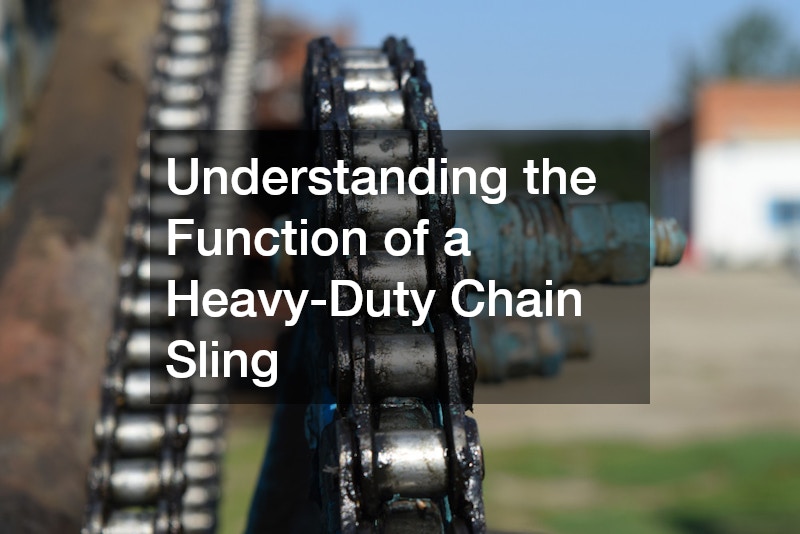A heavy-duty chain sling is a versatile and robust tool used in various industries to lift and carry heavy loads. These slings are commonly found in construction, manufacturing, shipping, and rigging operations, where safe and efficient lifting solutions are crucial. Understanding the function of a heavy-duty chain sling is essential for ensuring safe operations and preventing accidents. In this article, we’ll explore the components, uses, benefits, and safety considerations associated with these powerful lifting devices.
A chain sling is typically made from high-strength steel chains, which are designed to handle large loads and resist wear and tear. The basic structure consists of a chain made up of interconnected links, with hooks, shackles, or other hardware used to attach the load. The sling is designed to distribute the weight of the load evenly across the chain, providing a secure and balanced lift. Its design allows it to withstand high tension, making it an ideal choice for lifting heavy equipment, machinery, or materials.
One of the key advantages of a heavy-duty chain sling is its strength and durability. Steel chains are highly resistant to abrasion, heat, and corrosion, which makes them suitable for use in challenging environments such as construction sites, warehouses, and outdoor industrial operations. Unlike synthetic slings, which may wear down over time, heavy-duty chain slings maintain their integrity even under extreme conditions. This durability ensures that the sling will remain reliable and effective, providing consistent performance over time.
The function of a heavy-duty chain sling is straightforward: it’s used to lift and move heavy loads in a controlled manner. The sling is attached to a lifting hook or crane, and the load is secured using shackles or other hardware. When the crane or hoist is activated, the chain sling evenly distributes the weight of the load across the chain links, allowing the load to be lifted without causing undue strain on any single point. This even distribution of weight helps to prevent damage to the load and reduces the risk of accidents during lifting operations.
One of the most important functions of a chain sling is to provide flexibility in load positioning. Because the chain links are adjustable, operators can customize the length and angle of the sling to suit the load and the lifting mechanism. This flexibility is crucial when dealing with irregularly shaped or oversized loads that may require special handling. The ability to adjust the length and configuration of the sling ensures that the load is balanced and secure during lifting, reducing the likelihood of swinging or shifting during transport.
In addition to its strength and versatility, a chain sling is also valued for its cost-effectiveness and long lifespan. While chain slings may have a higher initial cost compared to synthetic slings, their durability and ability to handle heavier loads mean that they often offer better long-term value. With proper maintenance, a heavy-duty chain sling can last for years, providing a reliable lifting solution without the need for frequent replacements.
Safety is a critical consideration when using a chain sling. Proper inspection before each use is essential to ensure that the sling is in good condition and free from defects. This includes checking for signs of wear, corrosion, or any other damage to the chain links, hooks, or shackles. Additionally, the correct working load limit (WLL) of the chain sling must be observed to prevent overloading, which could lead to failure. Training operators in the correct use and inspection of chain slings is also essential for maintaining safety on the job site.
Another important safety consideration is the proper storage and maintenance of the heavy-duty chain sling. After use, it should be stored in a dry, clean area to prevent exposure to corrosive elements like saltwater or harsh chemicals. Regular cleaning and lubrication of the chain links help to prevent rust and ensure smooth operation during future use. By taking these steps, companies can maximize the lifespan of their chain slings and maintain a high level of safety in their operations.
In conclusion, a chain sling is an indispensable tool for lifting and moving heavy loads in industrial and construction environments. Its strength, durability, and flexibility make it an ideal choice for a wide range of applications, from lifting machinery to transporting large materials. Understanding the function of a heavy-duty chain sling, as well as its maintenance and safety requirements, is essential for ensuring safe and effective lifting operations. By using the right equipment and following proper safety protocols, operators can minimize risks and optimize performance, ultimately contributing to the success of any lifting operation.
.

